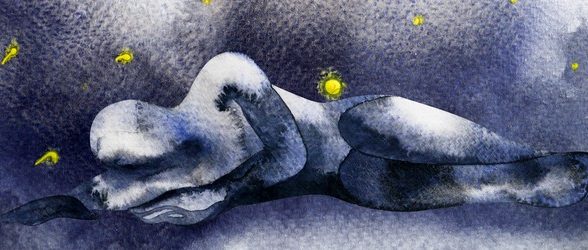Judi Chamberlin: Mad Pride and the Fight Against Institutionalizing Women
Content note: this post discusses miscarriage, mental illness, and forced institutionalization.
It’s Women’s History Month, which makes it an excellent time to talk about the fact that women’s history and disability history overlap significantly; notable women from Harriet Tubman to Helen Keller have been disabled trailblazers for social justice, including women’s rights. To do so, however, they had to fight not just sexism and racism, but disablism: Their disabilities were used against them to dismiss their activism, including by historians talking about their work. Using disability status to suppress women and their work is an ancient trend. This includes not just physical disabilities but also psychiatric ones — mental illness has been weaponized to institutionalize outspoken women, undermine women’s fight for equality, and justify the mistreatment of women across cultures and eras.
Numerous women in history have pushed back on the use of psychiatric diagnoses like depression, schizophrenia, and bipolar disorder to marginalize women, a practice that has its roots in terminology like “hysteria.” One woman, Judi Chamberlin, didn’t just fight for the civil rights of mentally ill women — she questioned the entire framework of how we talk about mental health conditions as an integral member of the Mad Pride movement. She felt strongly that mental health conditions were more complex than simple medical issues. Chamberlin argued that society contributes to the experience of mental health and that societal stresses can be used to medicalize people. Thus, natural emotions in response to life experiences like the death of a loved one could be twisted into evidence of pathology, for example.
Members of the Mad Pride movement may also identify themselves as psychiatric survivors, referencing a long history of abuse and mistreatment at the hands of unscrupulous members of the psychiatric profession. They argue that madness is a natural facet of the human condition, and something to be cherished as part of someone’s identity — some are not interested in medication and other treatments. Mad Pride is a person-centered movement that believes it’s important to empower people to make their own choices, recognizing that there isn’t a one size fits all approach to living with mental illness.
Chamberlin’s role in the movement intersects heavily with how psychiatry has been abused to keep women in the margins. She was forcibly institutionalized in 1966 after she had a miscarriage and sought help with depression. Her doctor suggested she go to the hospital, which she did — and then she discovered that she couldn’t get out. During her time on the wards, she witnessed the abuse of other patients and quickly learned that she’d need to lie if she wanted to secure her release, hiding her feelings and performing for the people around her to project an image of recovery. She reflected:
“I was consumed with the clear conviction that there was something fundamentally wrong here. Who were these people that had taken such total control of our lives? Why were they the experts on what we should do, how we should live? Why was the ugliness, and even the brutality, of what was happening to us overlooked and ignored? Why had the world turned its back on us?”
Chamberlin took that feeling with her when she left.
She joined the Mental Patients Liberation Front in Boston, along with other organizations run by people who identified as psychiatric survivors, including MindFreedom and the National Empowerment Center. In 1978, she published On Our Own: Patient Controlled Alternatives to the Mental Health System, which became a foundational text for members of the Mad Pride movement.
She also worked with the National Council on Disability on a 2000 report that centered the voices of people with psychiatric disabilities in a conversation about human rights in the context of psychiatric care. Along with others, she argued that regardless of “good behavior,” people should be allowed to wear their own clothes, receive visitors, and leave the grounds while in residential care. These things, she said, should be treated as basic rights, not things contingent on doing the things personnel in psychiatric facilities want patients to do; deprivation of these rights is an injustice. She also worked on the United Nations Convention on the Rights of Persons with Disabilities, a document the United States has yet to ratify.
Chamberlin died in 2010 of her underlying lung disease at the age of 65, a great loss for both the Mad Pride and disability rights movements. Her innovative work was remarkable on many fronts, but one was the ability to balance and respect different ways of approaching mental health conditions. While she may have taken a Mad Pride approach to her own life, she was careful to avoid invalidating the experiences of others, defending, for example, the use of psychiatric medication among people who benefited from it. Chamberlin’s work as an activist and community leader was centered on human and civil rights, and the power to make choices rather than having choices imposed by others. Her work created room for a diversity of experiences and beliefs, all rooted in respecting individuals as they were, rather than as others might want them to be.
Her belief that patients should remain in control of their own recovery wasn’t just about how people should manage mental illness. She was also interested in larger social supports and structures, like the ability to find housing, education, and work, which she saw as central components of human rights. Perhaps unsurprisingly, ultimately that led her to collaboration with disability advocacy groups that focused on issues wider than mental health. By the 1990s, she was working with groups like the American Association of People with Disabilities, finding solidarity in people with common goals of autonomy and liberation. This more holistic view is reflected in the approaches of many contemporary disability rights organizations, including ADAPT, which fights for home and community based services to empower disabled people to live in their communities and take charge of their lives.
She is remembered as a fierce woman who was unafraid to speak truth to power, and as someone who was also fun to be around; she had a deeply humorous streak and was beloved by many in her community. Her dedication to taking control of her care as human, consumer, and patient didn’t stop with mental health, either: She fought ferociously for the right to die at home, which she did, surrounded by loved ones.
”The public’s aversion to people who are different is not sufficient reason to justify locking them up.,” Chamberlin wrote in On Our Own. I couldn’t agree more, and I’m deeply grateful for the groundbreaking work she did to empower the mental health community. Without her efforts, my own life as a mentally ill person would likely be quite different; my ability to access mental health services on my own terms might be much more challenging than it already is without the work of advocates who fought so bitterly for autonomy. We still have a long way to go when it comes to acknowledging the rights of mentally ill people — whether we call ourselves people with mental health conditions, psychiatric survivors, consumers, or by other names — but people like Chamberlin laid the groundwork for our freedom.
About Rooted In Rights
Rooted in Rights exists to amplify the perspectives of the disability community. Blog posts and storyteller videos that we publish and content we re-share on social media do not necessarily reflect the opinions or values of Rooted in Rights nor indicate an endorsement of a program or service by Rooted in Rights. We respect and aim to reflect the diversity of opinions and experiences of the disability community. Rooted in Rights seeks to highlight discussions, not direct them. Learn more about Rooted In Rights




Thank you for this great piece on a great leader and friend!